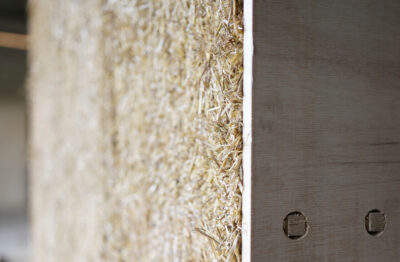Heating system replacement, energy-efficient house – the legislator envisages leveraging existing buildings to a minimum of their previous CO2 emissions.
For efficient building envelopes, straw is coming back into focus as an insulating material. Straw is a high-tech insulating material from nature: it has a high thermal storage capacity. During the day, heat is absorbed, which is then steadily released during the cooler evening and night hours, keeping the walls and your home as a whole warmer for longer. Compared to conventional, synthetic insulation materials, however, straw insulation can effectively block heat due to greater amplitude attenuation. The indoor climate is also influenced by its moisture-regulating capabilities.


